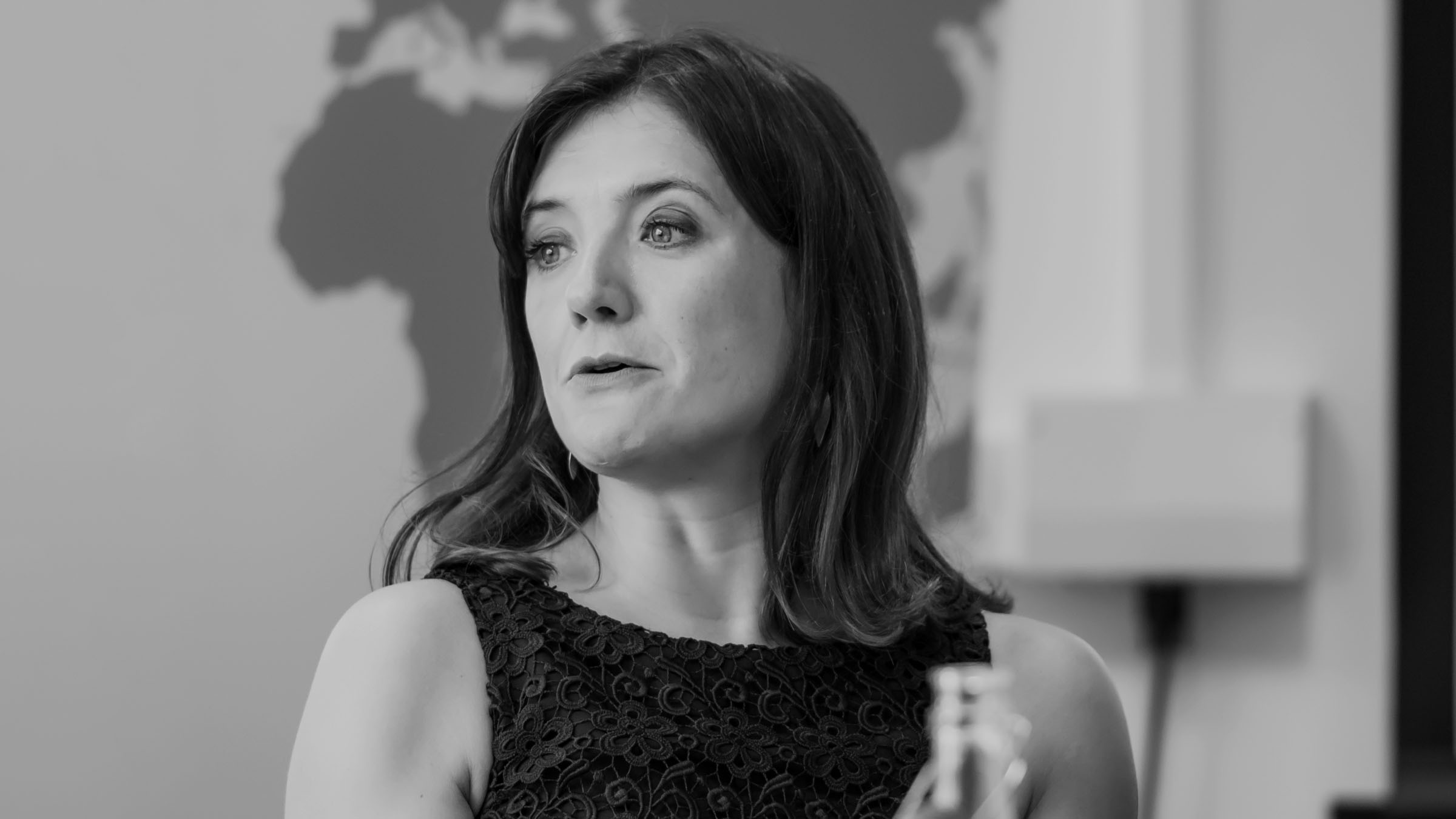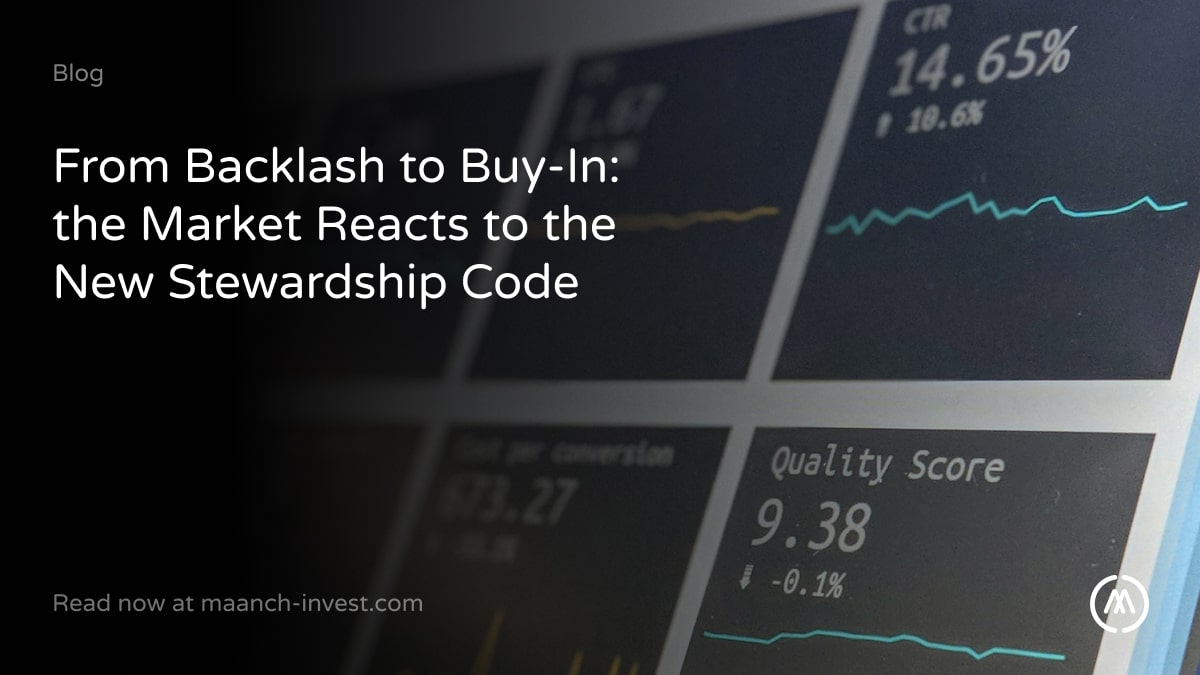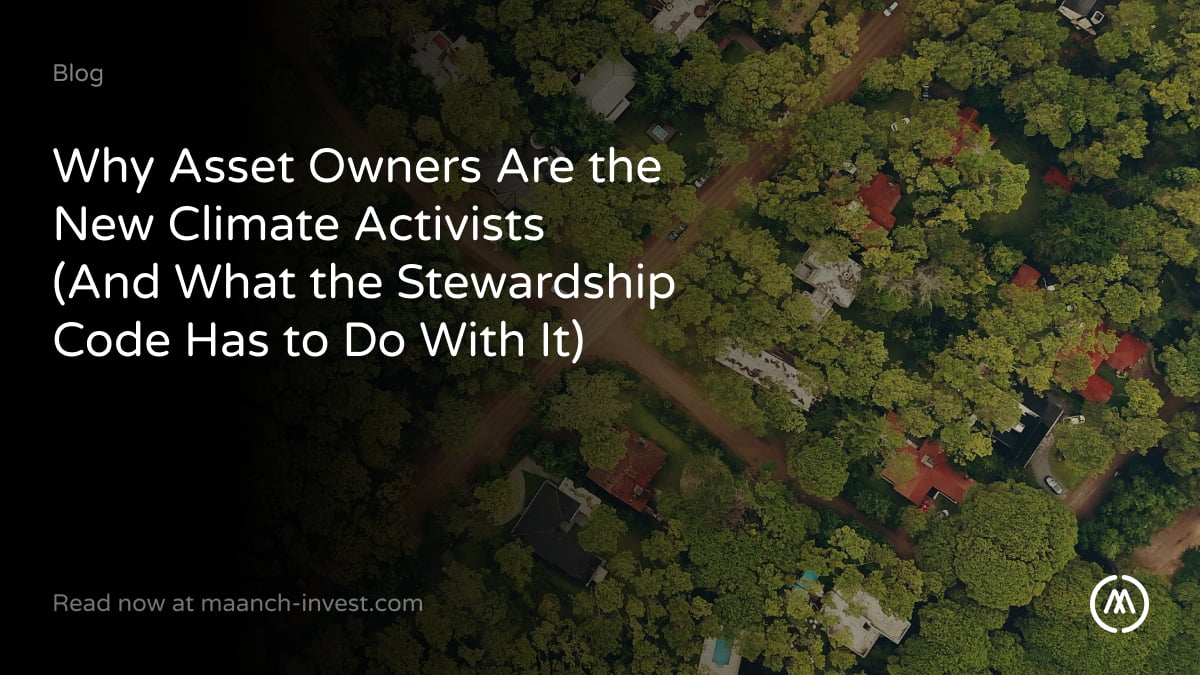A Conversation With Deborah Gilshan
We are back with our next Interview series and are delighted to welcome Deborah Gilshan. Deborah, is the founder of 100% Club, an advisory business on investment stewardship. She has extensive experience for over 20 years in investment stewardship, shareholder engagement and ESG integration. Deborah is also an active speaker and has been featured in various financial media such as the Financial Times, New York Times, Sky News and more.
Sianne Haldane, our Chief Impact Officer had a valuable conversation with Deborah on the role of ESG stewardship and engagement in investments and how to utilise the full suite of “tools” available to drive real sustainability across the investment chain.
1. Can you shed light on your professional journey so far, and what drives you?
I started my career in responsible investment with the Co-operative Insurance Society (CIS). CIS was a real pioneer of ethical investing and strong stewardship. It was the first UK institution to unfold its voting record in 2002. I then spent seven years learning about proxy voting and engagement as well as using other stewardship tools.
In late 2007, I went to work for the Railways pension fund (Railpen) – which clashed with the financial crisis. It was really interesting to work for a pension fund asset owner at this time. The role of asset owners in the investment chain – how they exercise power and influence and hold the investment chain to account, including intermediaries- such as asset managers has really interested me.
I was with Railpen for nearly 10 years and gained global experience in stewardship. Later, in 2017, I joined Standard Life Investments just before its merger with Aberdeen Asset Management. I then stepped into independent advisory work three years ago and absolutely enjoy the freedom of working with a variety of clients across the investment chain. In 2020, I wrote a report on diversity with the UK’s Institute of Business Ethics. Additionally, for the last two years, I have been collaborating with the Black British Business Awards to focus was on investor strategies on race equity and ethnic diversity.
2. How has the 30% Club driven collaborative investor initiatives with respect to diversity? How has effective collaboration improved overall ESG engagement?
I think collaborations are one of the most powerful tools that investors have. Collective investor voice is so important and it can be a really efficient way to engage as well. Railpen was one of the inaugural members and only asset owner of the 30% Club’s UK Investor Group, which was established in 2011. The idea was to use the power of investor capital collectively to demonstrate how important diversity in investee companies was for asset owners and asset managers.
Today, diversity is one of the key areas for investors across all asset classes, both in terms of their investments in companies and their stewardship priorities.
The 30% Club UK Investor Group now has over 40 members, with over £11 trillion in assets under management. So I think that’s really interesting, those data points showing the growth of the UK Investor Group being reflective of the increasing interest of investors in diversity over time. There are 30% Club investor groups around the world now, in France, Canada, Australia, Brazil, Japan and Poland.
I applaud other collaborative initiatives, such as Climate Action 100+. I think that collaboration and the use of collective voice are key to addressing the systemic issues and risks that investors are exposed to, such as climate risk and inequalities. For me, diversity is part of how we solve inequality.
“I’m particularly interested in the idea of systemic stewardship, using collective investor collaborations to drive systemic change and reduce systemic risk.”
3. What is ESG Stewardship and Engagement? How would you explain it to someone outside the asset management industry?
As an industry, we need to do a much better job of explaining these terms to a layman. With a number of macro events in the last few years, the role of companies and investors in society is very much more under the microscope now.
Investment stewardship is much more than running portfolios, it’s about the relationships investors build with investee companies. To a layperson, who the financial industry acts for – we must demonstrate that we are doing the best job for them with their investments on their behalf with their money. Stewardship is part of that.
It is fundamentally about investors using their influence over the current and potential investee companies and thinking about the impact on other stakeholders – to maximise overall, long-term value. This includes considering the impacts of environmental, social and governance factors that can affect the returns that clients and beneficiaries depend on. The power in the voice of consumers and other stakeholders such as employees, alongside investors, is also increasingly coming to the fore.
ESG Stewardship and Engagement are complementary strategies. Engagement is just one of the many stewardship tools available to investors. It primarily refers to an investor communicating with current or potential investee companies to improve ESG practices, sustainability outcomes and/ or public disclosures. It typically takes the form of meetings, calls, emails and letters between the investor and the investee company during which issues are discussed and investors clarify their expectations.
There is a brilliant quote from “Security Analysis” by Benjamin Graham and David Dodd (1934) which best explains why stewardship and active ownership is so important. “The choice of common stock is a single act; its ownership is a continuing process. Certainly, there is just as much reason to exercise care and judgement in being as in becoming a stockholder.”
4. How do you see ESG engagement creating value for investors and companies?
There is currently an interesting debate about ESG data and its utility. ESG data is helpful, but I worry about trying to reduce companies to a score. For me, it is revealing the change in ESG scores, which can often be more insightful. Additionally, capturing the qualitative aspects of companies is crucial.
Fund managers often fear that an ESG lens might reduce their universe of investable opportunities. But instead, it opens up an understanding of the variety of sources of risk and return. A deeper understanding of ESG factors can highlight opportunities to add value to portfolios.
In my experience, governance can be a really powerful indicator of internal sources of investment risk and return. A strong understanding of environmental, social and governance factors is important, and I don’t believe it’s helpful to position these diverse factors under the single acronym, ESG. There are so many factors, even just under each element of ESG.
The word “sustainable” means (i) to be upheld or defended and (ii) able to be maintained at a certain rate. When you think about sustainable investing through those lenses, it helps to move away from some of the more reductive debates.
“On a very similar note, Maanch works with companies and fund managers that face challenges around sustainability and thinking about ESG and beyond. Our net societal impact approach focuses on elaborating on the holistic impacts that they have on society, which can be negative, positive, intended, or unintended. And how we can help improve the overall impact of the core business of the company”, Sianne.
5. What are your top tips for integrating ESG and shareholder engagement into investment strategies?
It goes back to the importance of capturing and tracking progress. A lot of portfolio managers are now beginning to understand the real benefits of stewardship. This whole idea of tracking and recording engagement is going to become even more important. As many investors develop their engagement frameworks and publish them to demonstrate their stewardship credentials. Engagement recording and tracking are areas that we need to spend more time investing in. There have not been that many solutions, until more recently.
“If we want to see more engagement, we need to be able to capture it and demonstrate its impact as well.“
Absolutely, and that was the genesis for Maanch in developing the Engagement Tracker Tool. Helping investors and asset managers to have everything in one place, where they can capture their engagement data with room for the voting information to be included there. Allowing for the escalation of required policies, so that when an issue has been escalated to a certain point, they can seek timely action.”, Sianne.
6. You served on the advisory panel of the UK’s Financial Reporting Council. Where do you think things are going around reporting on stewardship?
I am really supportive of regulatory tools such as the UK Stewardship Code, as I believe it is driving change and more clarity. There are some great innovations in reporting; for example, I was pleased to see Railpen recently published a report specifically for members, to engage with them on what they’re doing on ESG integration and stewardship. This goes back to my earlier point about doing a better job of explaining to the end beneficiaries what is being done on their behalf with their money.
There are other innovations, such as pre-AGM voting disclosure and some asset managers are now more willing to propose shareholder resolutions, which previously have predominantly been within the purview of asset owners. Shareholder proposals have historically been seen as a combative tool but we should reframe them as simply the exercise of a shareholder right.
The UK Stewardship Code has been copied in many markets globally. I’m interested to see whether the new version of 2020 is also copied in a similar way. The UK Corporate Governance Code also has a strong focus on the role of investors as stewards and provides a structure to hold companies to account.
“Absolutely, as it puts more pressure on directors to be thinking about their duties”, Sianne.
7. Tell us about the 100% Club network and why you set it up in 2011?
“I thought if I worked hard enough, it would get me where I needed to go. Actually, it doesn’t, you also need to have a network of colleagues, contacts and support.“
A lot of evidence tells us that women are kept out of networks. Moreover, we all know that financial services and investment have some serious challenges to diversity. So, in 2011, I decided to set up a network for women who worked in governance and sustainability. Even for an industry that is challenged by diversity, it is pleasing that sustainable investing has strong female representation, including women in senior roles. The idea was to connect women who were company assistants and general counsels with women who worked in sustainable investing through events where we spotlighted inspirational role models and provided a space for women to share their stories and build their social capital. 100% Club has two main aims: to improve the diverse environment of our industry and display the power of gender-based networks.




